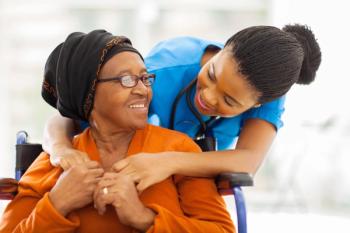
Outpatient Care Mobility Program Posed Successful in Treating Veterans in Post-Acute Care Setting
A mobility program was adapted in a study to address the needs in patients of the Veterans Health Administration, as the lack of evidence-based programs targeting veteran’s mobility is a critical and significant gap in community living centers.
The out-patient care program Live Long Walk Strong (LLWS) proved to be successful in improving physical functions for older patients in a post-acute care setting and 3 months after hospitalization.
Researchers of a study published in the Journal of the American Geriatrics Society adapted the successful LLWS program to address the needs in patients of the Veterans Health Administration (VHA), as the lack of evidence-based programs targeting veteran’s mobility is a critical and significant gap in community living center (CLC) care.
Mobility and functional independence for older adult patients are high priorities among post-acute care facilities, as they affect their quality of life. After hospitalization, older adults' functional recovery should rely on skilled nursing facility rehabilitative care.
Within the VHA, post-acute skilled nursing care is provided in CLCs, serving over 30,000 veterans annually.
Researchers of the study adapted a version of the LLWS program not only to serve veterans being treated in the CLC for post-acute rehabilitative care, but to determine the acceptability and feasibility of the CLC- LLWS program and evaluate the preliminary effectiveness of this program of care on physical functioning.
Before adopting the program, LLWS was developed as a clinical program targeting mobility-limited, community-dwelling older adults. The care program differs from standard physical therapy care by treating impairments linked to functional decline that are not traditionally targeted by standard care, providing formalized coaching to optimize behavior change, and providing post-discharge case management to optimize long-term outcomes.
The design of the program in this study monitored veterans using Replicating Effective Programs (REP) framework, collecting data from patients from December of 2020 to March 2022.
The CLC-LLWS program consisted of two main components: an in-patient component focused on maximizing functional recovery and a community component focused on care coordination with home health agencies, veteran goals, and engagement in a physical activity program.
Veterans were enrolled in the program based on their eligibility. Criteria included: the veteran must be admitted to the CLC for post-acute rehabilitative care, able to walk with at least minimal assistance, expected to discharge to a community setting and able to reliably follow instructions.
Exclusion criteria included: receiving hospice care, inability to transfer from sitting to standing with assist from one person, experiencing severe, uncon- trolled pain, and more than 3 physical therapy session refusals over the course of care in CLC prior to screening for the CLC-LLWS program. The referral could occur during the veteran's initial evaluation or during their stay in the CLC based on their progress.
After 18 months, 51 Veterans had enrolled in the LLWS program, with 94.1% maintaining enrollment. The program resulted in measures of feasibility and acceptability of more than 80% enrollment and completion of sessions, as well as preliminary effectiveness using performance-based and patient-reported measures of function including the Short Physical Performance Battery (SPPB), AM-PAC, a Global Rating of Change questionnaire, and a satisfaction survey.
According to the study, veteran feedback at the end of the program was consistently positive, including statements such as “I wish this program was longer!”, “I loved the follow-up”.
Although this program concluded with a positive response, future research is suggested by researchers to further examine the program's impact on other important outcomes relative to standard modes of care.
The need for further research supports the notion that there were several limitations in the study. For example, there was no pre-assessment of the program or a comparison group. Also, the CLC-LLWS program was not a randomized control trial, but a clinical demonstration project, having incomplete follow-ups of participants still engaged with care and greater potential for bias because outcome measurement was not blinded. Next, the project was conducted with veterans only.
Veterans with cognitive impairment included in the study also poses as a limitation because it may have influenced self-report scores as well as adherence to home follow-up appointments. Lastly, the virtual aspect of the home follow-up visits also presented challenges as some veterans had difficulty connecting to the video appointment due to technical challenges, resulting in the use of phone follow-ups instead.
Newsletter
Get the latest industry news, event updates, and more from Managed healthcare Executive.






















































